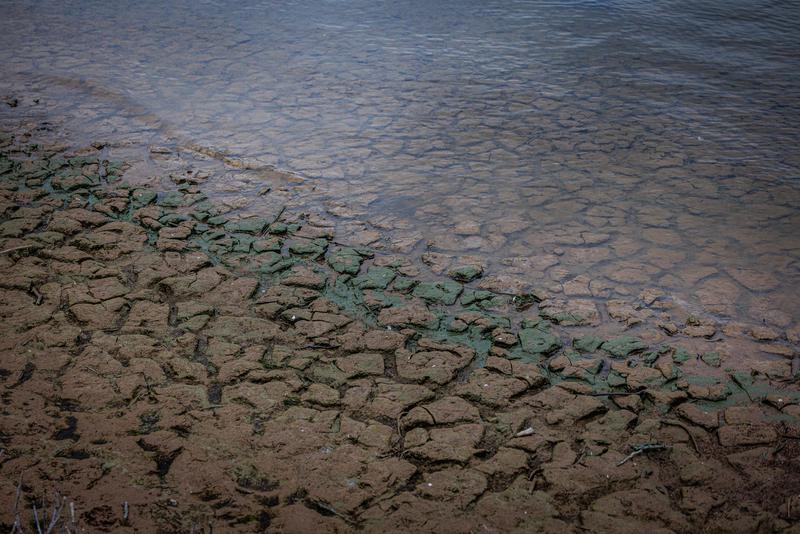Drought measures 'a band aid on the problem', environmentalists say
As Barcelona residents are confronted with water restrictions, activists say government should look at tourism

The more than 3.2 million residents of the Barcelona metropolitan area were placed under a pre-emergency alert of drought on November 21, as a result of the ongoing drought, that has held Catalonia in a chokehold since fall of 2020.
With rain nowhere in sight and a record long summer, the water reservoirs that supply the metropolitan area have reached a critically low capacity level of only 18%, and residents have been restricted to consuming 210 liters of water per day.
Catalan Government spokesperson Patrícia Plaja warned in November that entering the next stage, a state of emergency, over the lack of water is “inevitable”, and that that measures like lowering the water pressure in the faucets is being studied. This would save around 7% more water, according to the water operator, Aigües de Barcelona.
Band aid on the problem
According to Dídac Navarro, spokesperson of environmentalist group Ecologistes en Acció, the Catalan government has “lacked the courage” to put stricter measures in place sooner. “They could have done a lot more. Now, they are just putting a band aid on the problem,” he laments.
The water saving measures put into effect in late 2022 also included shutting off the water in the decorative fountains, limiting irrigation of the city’s parks and gardens, as well as reducing the number of beach showers in service during the summer.
Use of saltwater
A further measure taken by the Catalan authorities has been to increase the amount of saltwater turned into freshwater, a 13-step cleaning process called desalination.
Currently, Catalonia has two desalination plants that transform salt water into water used for industry, agricultural and city irrigation and filling the aquifers. But environmentalists are worried that the price of desalination is too high.
“The desalination plants are the second biggest electricity consumers in all of Catalonia,” says Dídac Navarro. “The higher energy costs could mean that consumers receive a higher water bill as well – up to €85 more a year,” he explains.
But it’s not only an economic problem that consumers will feel in their pockets, Navarro points out: “It's also an environmental issue. All the electricity spent on desalination is contributing to climate change. It's a vicious circle,” he says.
Traffic light water saving system
The measures have all been part of the five-phase traffic light system from the 2020 special action plan in case of drought by the Catalan government. The steps in each phase indicate which measures to take to gradually save water.
The current pre-emergency phase was not part of the original five phases, however.
Instead, it was added “to raise awareness among the public to conserve water before the emergency threshold is reached," explained the Catalan minister for climate action, David Mascort, in November of 2023.
"We cannot make it rain, but as a country, it is in our hands to reduce the consumption of water in every home, company, and business," Mascort added.
Higher water consumption among tourists
Almost every sector from agriculture to industry as well as the regular Barcelona resident have felt the consequences of the drought and the restrictions on water. But one sector has gone unscathed, according to Dídac Navarro.
“The tourism sector hasn’t had any sort of restrictions,” he says, calling it “unfair on a social level”. “We should rethink whether to prioritize the farmers’ fruit trees or a totally unregulated tourism sector, especially knowing that any tourist consumes more water than a regular Barcelona resident,” Navarro says.
A 2022 study from the University of Girona shows that a tourist consumes twice as much water daily as a Barcelona resident, on average. The same study also calculates that the water consumption of the tourism sector makes up 15% of all water consumption in Barcelona.
“We need to rethink who we appeal to when we ask to turn off the faucets,” says Navarro. Because it can't be that some economic activities continue to consume water in this savage way while the residents and other economic sectors are suffering under pretty harsh restrictions,” he adds.
For their part, the Barcelona Hotels’ Union, Gremi d’Hotels de Barcelona, said in a statement in May 2023 that they have already reduced their water consumption by 40% since 2018, although their own numbers do show that water consumption of hotel visitors is still higher than the average Barcelona resident.
Hydric stress and deadly consequences
There were telltale signs of the seriousness of the drought before the pre-emergency alert was put in place.
The beforementioned decorative fountains all over the city, such as the famous Font Màgica in Montjuïc, have been shut off since early 2023.
On an ecological level, trees in the Catalan capital have been suffering from hydric stress, meaning that they have been losing their bark, while other trees have succumbed to the lack of rain or irrigation.
In one such case in August 2023, a 20-year old woman was killed in the Raval neighborhood after a palm tree fell.
Since then, the city authorities have been conducting emergency inspections of over 1,000 trees to prevent further accidents from happening.
The weather prognosis shows no signs of favorable weather change this coming winter, and when the capacity of the water reservoirs falls below 16%, Barcelona will go into a state of emergency and further water restrictions are expected.